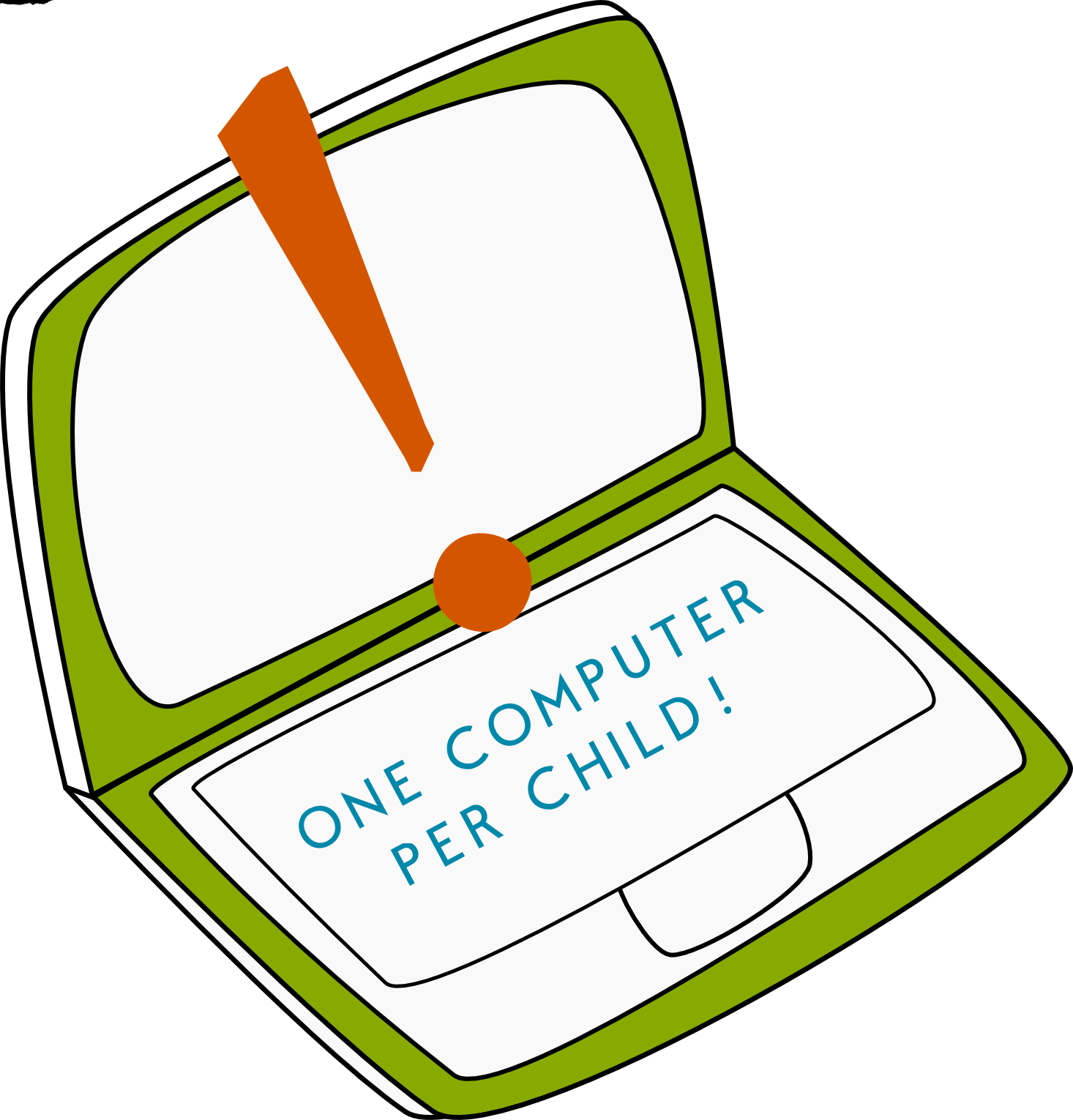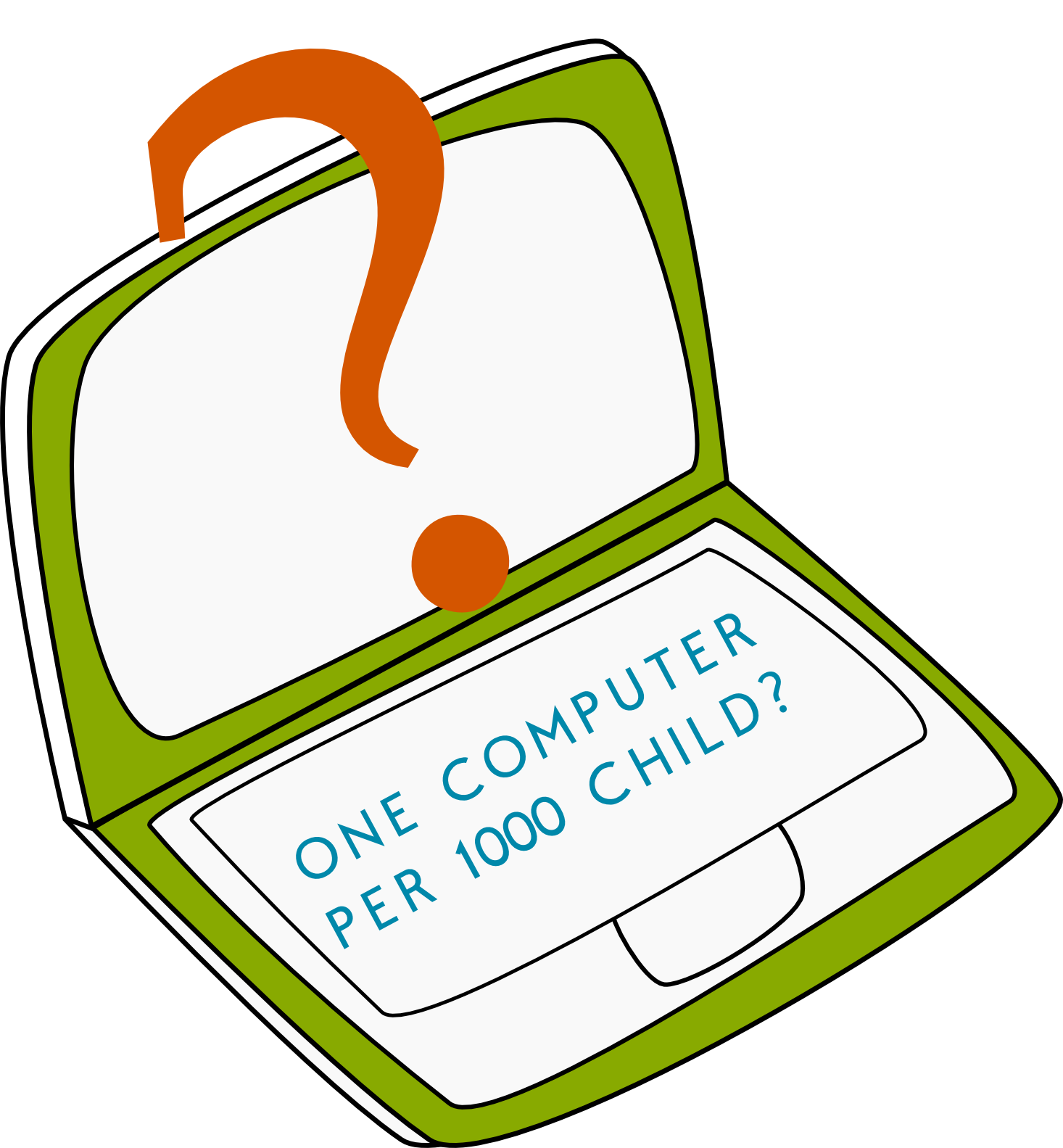Yesterday ( it should be now read “a couple of years back”)while giving a talk, I was asked this rhetorical question (not verbatim, but close):
“What did you say was the sample size of your study?”
“Two. This was a case study.”
“So, considering that the activity that you have designed requires a computer and expeyes (a hardware for collecting data). How can you scale it up to schools which have millions of children?”
It seems that the person who was asking the question, for lack of any other question asked this. In seminars and academic institutes, there are always people like this, who will ask the question for sake of it. Just to make their presence felt. Anyways, it was good for me. I was expecting that this question would be asked. And I was very happy that it was asked.
The short answer that I gave was:
“You give a million computers to a million children!”

Some people thought, this was a rhetoric answer to a rhetoric question, which incidentally was also humorous, as it also generated a lot of laughter, but this was not the case. In this post, I would like to elaborate on the short answer that I gave.
Of course, most of these ideas have come from reading and hearing Seymour Papert (who has recently demised, the article was started before that, but due to my lethargy never seen completion). The memes have been transferred, and now I am trying to make sense and adapt them to my own experience. And I would like to assert again that reading Papert has been an immensely rewarding and enriching experience for me. His are perhaps few books which I do not mind reading again and again. I like his writing style of giving parables to explain points in his arguments because the points he wants to make do not need a backbone of statistics to survive. Here also I will give a hypothetical example (derived from Papert) to explain what I meant.
The technological tools that children are using now mainly in the traditional school system are the pencil and the book. In this case, almost all educationalists would agree that every child would require to have one pencil to write and book for study. Even then there are some children who do use computers, some because their parents have them, some because the school has them, some have both. Now we consider a time 50 years back. Computers were almost non-existent, as we know them now. Computers were one of the most complicated and expensive technological artefacts that humans produced. But the enormous amount of money and efforts were put in the miniaturization of computers. So finally now we have computers that have become devices that we now know. In the last 50 years, the computer technology has grown exponentially, while the prices for the memory and computing power that one gets are falling, their usage.
Consider a classroom of 50 years back. Though there were computers they were something to be wondered about, something like very very expensive toys. The computers were not mature enough that children could handle them. In the classroom, the only available technological artefacts were used. The technology in the classroom was the pencil
and the printed book and a notebook to write with the pencil and of course, there was the blackboard.
Wait, you might be thinking we are in a digital age technology by default means computers, be it in your smart-phone, laptop or a desktop or at least a projector for god’s sake. But here I would like you to think about somethings which are very deeply embedded in our cultural psyche. The very fact that many things which we take for granted are
all technologies. For example, the writing instruments that you have to be it a pencil or a chalk are all technologies. But most of us don’t think of them as such because they are so common and most of us have had our experience with them. The mystery is lost. As the Arthur C. Clarke once said about technology and magic as his Third Law:
Any sufficiently advanced technology is indistinguishable from magic.
So deeply embedded this image is that we define it as the normal for our learners to be able to use this technology. Rather the entire edifice of our educational system rests on it. For example, your educational achievement is more or less based on the fact how much you can “write” in a limited time, from memory. And this we call assessment, examination and the like. Also the written text, from the time of Gutenberg, has more
or less complete hold over our intellectual activities. The text formed the basis of our discourse and analysis of the world. Why do children use to write with a pencil on piece of paper in order to learn. The drill typically starts with the children trying to
recreate elegant fonts in some shape or form which is decipherable for the teacher. You have to write “A” 500 times to get it right, ok? How would you write words when you cannot write alphabets? How would write sentences when you cannot write words? How will you write examinations if you cannot write sentences?
Is it the only way in which we can learn language? If we observe this in detail we see that only reason we ask them to write “a” 500 times in a notebook is because it comes from an era when there was no other technology to write. And this is the same learner who can converse well and answer questions, but yet we need them to write it down with their hands. It was the only possible solution. And generations of humans were trained using this method. So much so that most of us still think this is the only method for education. Any deviation from hand-written text is seen as a abomination. But typing on a computer provides us, and especially, young learners with cognitive offloading of immense task of holding a writing instrument and shaping an alphabet, a word, a sentence out of it. Children learn to type much much faster than they learn to write with a pen. And what is even more important is that the written text is in electronic form, which can be revised and shared with their peers and teachers. In hand written text there is no question of revision, the original takes too much effort to produce so there is no question of revising it.

Considering the amount of cognitive load the child has to undergo to produce decipherable alphabets, words and sentences in order to “write”, a thing which he can perfectly do orally, are the results worth the effort? Are there any studies which show that this is an efficient method? Yet is used everywhere without exceptions and we accept it meekly without challenge because this is how it was done in the past and someone in the past must have had good reason to use this hence, we should also use this. Papert calls this as “QWERTY Phenomena”. Somethings just get culturally embedded because the are
suited for an bygone era, the are like relics in the current era. And writing with pencil and paper is just one of them.
Now consider the question that was asked at the beginning of the post. Replace the computer with a pencil. The question then becomes,
“So, considering that the activity that you have designed requires a
pencil and a notebook. How can you scale it up to schools which have
millions of children?”

Suddenly question seems rather bizzare and at the same time sotrivial. Of course you might say but the pencil and notebook is so much cheaper than the computer. Yes. It. Is. But if you consider that a well designed laptop like OLPC, can serve a learners for 5-6 years and can remain with them through the schooling years. Then calculations show the investment that we seek is rather modest. In general when something becomes more
common, it also becomes cheaper. Mobile phones provide an excellent proof for this argument. And it is not happening in some first world country but in our own. What has promoted a rapid growth in the number of mobile users? How do tariff plans compare
from 15 years back to now? How come something which was something exclusive for the rich and the famous, just a few years back, is now so common? It is hard to find a person without a phone these days. Even people who do not have access to electricity have a
phone, they get it charged from some place else. Now if some sociologist would have done some study regarding usefulness of mobile phones for communication, perhaps 20 years earlier, they might have had some statistics to show, but critics would have said,
“but the cost is too prohibitive; this is perhaps ok for a case study you seriously
think all (or most) of the people can have this; and people who cannot
read and write will be able to use this; people do not have
electricity and food to eat and you want to give them mobile phone?”
But look at where we are, because people found contextual and personal value in using a mobile, it became their personal assistant in communicating with others, an inherent human trait, they got it. With proliferation of the mobiles, the cost of hardware came down, the cost of tariffs came down, almost everyone could afford one now.
It is sensationalist to compare a pencil and laptop in terms of cost, but when you consider the kinds of learning that can happen over a computer there is simple no match. They are not different in degree but in kind. Note that I have used “can happen” instead of will happen. This is for a reason, a laptop can be used in a variety of ways in learning. Some of the ways can be subversive, disruptive of the traditional education system, and redefine radically the ways our children learn. But in most cases its subversion is tamed and is made submissive to the existing educational system. And computers are made to do what a teacher or a textbook will do in a traditional context. So it is blunted and made part of a system which the computer has the potential to alter radically.
Some people then cite “research studies” done with “computers”. These studies will typically groups “with” computers and “without” computers. Some tasks are given and then there are pre and post tests. They are looking at the submissive action set in a highly conservative educational system. Even if such studies show the use of computers in a positive light, all these studies are missing the point. They are just flogging a dead horse. The point that computers when used in the right way, the constructionist way, can change the way we learn in a fundamental way. There are many studies which “prove” the counter-point. That computers don’t improve “learning”. Typically children will have limited access both in terms of time and sharing it with more people. One computer shared by three people, one hour in a week. Even then children learn, with computers if
used correctly. Continuing with out example of the pencil, consider this: one pencil shared among three children, once a week! Seems absurd isn’t it? But this is what typically happens in the schools, children are not allowed to develop a personal relationship with one of the most powerful learning ideas that they can have access to. Access is limited and in most cases uninformed involving trivialisation of the learning ideas that can redefine learning.








